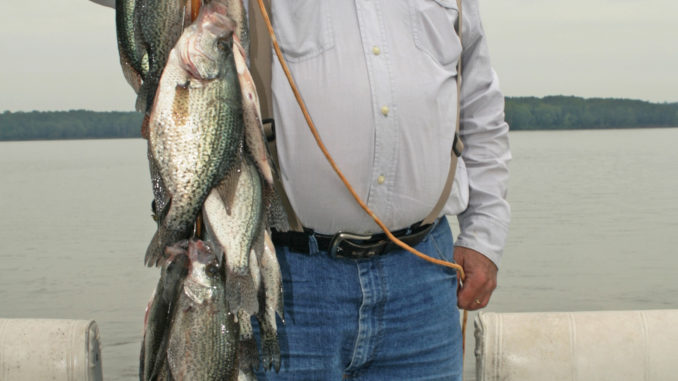
Concentrate on main-river channel on lower end for best Fishing Creek crappie fishing.
Fishing Creek Lake is a relatively small body of water, approximately 3,000 acres, downstream from Lake Wylie and upstream from Lake Wateree on the Catawba River chain. It’s so small that some fishermen don’t know much about the lake’s crappie fishing, but those who do keep up with the big-time action.
And when crappie fishing begins to slow down this month on other Catawba River lakes, the action is usually red hot at Fishing Creek.
Guide Buster Rush of Camden fishes several lakes for crappie, and Fishing Creek is one of his favorites in May.
“Fishing Creek Lake typically produces lots of limits of crappie, consistently, during May,” said Rush, 70, who has been guiding for more than 20 years. “Based on typical action for Fishing Creek, it should remain good right through May and sometimes even in June, depending on water temperature.”
Rush and his son, Russell, 47, guide on Fishing Creek, as well as Wateree and Lake Marion; they agree that the key to success at Fishing Creek in May is depth, speed, patience and perseverance.
Buster Rush said the main river channel and the ledges, drops and humps associated with it dominate fishing considerations this month..
“By May, most of the shallow-water fishing, in terms of catching crappie in very shallow water, is usually over,” he said. “So success on Fishing Creek will be more about the underwater contours along the lake bottom and the woody cover associated with those areas.
“Fishing Creek, except for the very lower end, is primarily the main Catawba River channel,” Rush said. “But don’t be fooled, there is some excellent crappie cover along the way, even far up the river. In fact, during the colder months, that’s often a preferred area to fish. By springtime, the fish are found throughout the lake, and the lower end produces excellent fishing, but there are also some creeks and large coves that offer plenty of water depth and excellent fishing prospects during May.”
Buster Rush said his preferred method for taking crappie at Fishing Creek this month is to troll using jigs.
“In recent years, Russell and I have found Fishing Creek to be perhaps the most dependable crappie fishery in the area in May,” he said. “We primarily troll, and one reason that is so effective is that the water is a bit colder — a few weeks behind the temperatures and activity we find at Lake Wateree. So as the spawn occurs and things begin to get into a post-spawn mode (on Wateree), things are usually really going well at Fishing Creek.”
Rush said that while some crappie spawn on Fishing Creek in May, all fish don’t head to deep water and scatter. They can be found and caught on some very dependable patterns.
“Our favorite pattern is to use a pontoon boat and actually use the (outboard) motor in reverse so we can back-troll,” Rush said. “With the pontoon, I can get a very wide spread on my rods, and I will place from a dozen to 16 rods out at any given time. To keep the speed where I need it (.8 to 1.1 miles per hour), I’ll put out a 6-foot wind sock, or sometimes two or three 36-inch socks, to slow the speed of the boat. I will experiment and adjust the speed for that specific day, but that is the range I use, and it will produce most of the time.
Rush will tie on 1/16-ounce jigheads and usually crimps on a small split-shot up the line from the jighead to get the rig a bit deeper. He’ll sometimes use two jigs to get the weight right, and he occasionally catches doubles.
The Rushes primarily troll to enhance their options of speed, depth and colors of lures.
“The best colors, as well as depths and speed patterns may change on a daily basis,” he said. “We’re continually changing jig sizes and colors so we can work different depths with different colors. Once we lock onto a pattern, we work it hard. The basic patterns of yellow, white and chartreuse — with different colored heads and tails — are good places to start. But we’re not bashful about experimenting with bright or mixed colors.”
Russell Rush said the soft-plastic bodies they use will change frequently and will run the gamut of colors to cover all angles.
“I’ll change color patterns, speed and depth frequently until I find what’s best on a particular day,” he said. “Sometimes the cloud cover or bright sun will have a big impact on color productivity and speed of presentation.
“There were some basic lures and color patterns that produced best (last spring), and one of those was an AWD bait called ‘The Possum’, which is a light brown on one side with a yellowish color on the other side and a chartreuse tail. Another good color is typically a darker brown with gray on the other side and a chartreuse tail. One other favorite is the ‘Popsicle’, which is tri-color lure of blue, pink and white.”
Having the patience to fish several areas searching for one that holds a large number of fish is basic to success.
“We troll because we can cover more water effectively at this time of year,” Buster Rush said. “Some days that’s the key: cover enough water and you can narrow down where the fish are and target that place and depth precisely. On other days, the fish will be scattered, and trolling enables us to cover a lot of area and pick up fish on a regular basis.”
Finding wooden cover at the right depth will help put crappie in the boat this month.
“The key to spring and right on into early summer fishing at Fishing Creek is finding woody cover at the right depth,” Buster Rush said. “One of the keys to our success is our knowledge of where a lot of brush piles and underwater woody cover is located. We have located a lot of natural tree blowdowns and brush piles in a variety of depths over the years so we can effectively fish depths from 20 feet deep to shallow water. We can fish wherever crappie want to go.
“I also use electronics continuously to look for underwater brush and cover and for fish as well,” Buster Rush said. “There are also days when the fish will suspend in the water column above the brush and well off the bottom. If I watch the graph I’ll recognize this and can really catch some crappie quickly by trolling, once I get the depth and speed right.”
“Patterns will not only change from day to day at this time of the year, they’ll change during the course of a day,” Russell Rush said. “Carefully work whatever form of woody cover you can locate in a specific depth pattern that produces fish. Sometimes we’ll find the fish in 17 feet of water, for example, and that’s where most of the fish will be. Depth will be so critical that we may catch only a few at 16 feet or 18 feet.
“Once we find a pattern, we’ll fish similar places and generally pick up several fish at each place until the pattern changes. The pattern change can be associated with time of day, the onset of cloud cover or losing cloud cover. It complicated in one way, but it’s really simple. We often just have to change the depth we’re fishing and slow down or speed up if trolling to cover different depths.”
“Crappie fishing success can hinge on small details and that’s what both Dad I constantly look for,” Russell Rush said. “These are the small bits of information that turn a decent day into a great day.”
Rush said while they often find plenty of crappie on the main lake this month, some of the larger creeks and even flats off the channel can be productive, and he said Bear Creek is an excellent area troll in May..
“We use 1/16-ounce jigs to begin with but will change as needed,” he said. “Sometimes, you can get away with larger jigs, and occasionally, you need even smaller jigheads; it a daily experiment. But that’s a good rule of thumb as for a good size to begin fishing. We’ll slow troll with different lengths of line out on different rods, which will help cover different depths. Once we begin to get bites on a particular depth or color, we’ll focus more rods (on them). The Bear Creek area is great for this time of the year, but is not the only place you’ll catch crappie by slow-trolling.
“Trolling along the main-river channel in the lower end of the lake is also excellent,” he said. “We’ll do that sometimes when looking for scattered fish and will work up into some of the larger coves and pockets as well. There are some high spots and humps on the ledge of the channel with a woody cover that will produce excellent fishing.”
Buster Rush said his crappie-fishing experience and a couple of things he saw in 2013 are pointing him to a great 2014.
“I’m excited … because the lake has a couple of very positive things going for it in terms of crappie fishing,” he said. “First, the lake is full of big, fat crappie, and Russell and I caught a caught a lot of limits of keeper-sized and (much larger) fish in 2013. Plus, we caught and released a huge number of smaller fish that I believe will easily be in the keeper-size class (this spring).”
DESTINATION INFORMATION
HOW TO GET THERE — Use the town of Great Falls off I-77, SC 21 and SC 97 in Chester County as a starting point. Access to Fishing Creek Lake is via either one of two excellent launching ramps: at Springs Creek Park in Lancaster County off SC 200 in and the Fishing Creek Access Area off US 21 in Chester County.
WHEN TO GO — May is a prime month for crappie fishing at Fishing Creek Lake. Fish will be a bit shallower early and late in the day, but most fishing will be in 12 to 20 feet of water, by trolling or fishing in or around heavy cover. Fishing at night under lights can be very productive through the summer and into the fall.
BEST TECHNIQUES — Trolling jigs is the favored method of guides Buster and Russell Rush, but tight-lining minnows or jigs around the abundant underwater cover will also produce excellent results, especially late in the month. The depth at which fish will be caught will likely change daily, with cloudy days usually bringing the fish a bit more shallow. However each day seems to require depth testing for best results.
GUIDES/FISHING INFO — Buster Rush, Russell Rush, Rush Guide Service, 803-432-5010, www.rushguideservice.com. See also Guides and Charters in Classifieds.
ACCOMMODATIONS — Chester County Chamber of Commerce, Chester, 803-5814142, www.chesterchamber.com.
MAPS — Duke Power, www.duke-energy.com/lakes; Navionics Electronic Charts, 800-848-5896, www.navionics.com; Fishing Hot Spots, 800-ALLMAPS, www.fishinghotspots.com; Delorme’s South Carolina Atlas & Gazetteer, 800-561-5105, www.delorme.com.

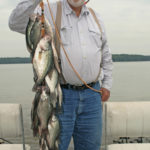
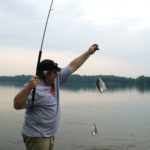
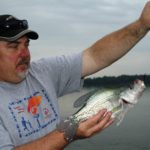
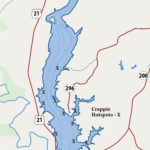

Be the first to comment